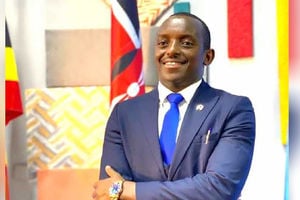Grand plan for wealth

A national plan to make Kenya as wealthy as the rising stars of the Far East like Singapore, Thailand and Malaysia was unveiled yesterday.

The strategy targets an annual growth rate of 10 per cent for the next 25 years, which would see individual incomes rise more than six times over from the current Sh33,120 a year to Sh220,680 a year.
In addition the country's Gross Domestic Product (GDP) – an indicator of the nation's wealth – would grow from Sh1,123 billion a year to Sh12,168 billion.
The plan – called Kenya Vision 2030, Transforming National Development and led by the National Economic and Social Council – is to be launched by President Kibaki on October 26.
It is based on the premise that the so-called Asian Tigers of Singapore, Thailand and Malaysia were at the same stage of development as Kenya was 30 years ago, yet catapulted themselves to industrialised and modern economies within a generation.
The project will be spearheaded by a national steering committee chaired by the President and comprising members of the National Economic and Social Council. It will be the main decision-making team of the Vision 2030 project and will meet every four to six weeks.
Vision 2030 committee

Implementation will be handled by a committee chaired by the head of the public service and made up of permanent secretaries from key ministries, meeting every three to four weeks. It will be supported by a core technical team of key managers from the public sector backed by external experts to be hired as required. It will meet continuously.
Support for the project will be provided by a ministerial Vision 2030 committee of five-seven Cabinet ministers and it will be managed on a daily basis by a project director. Already, the council has interviewed several candidates and has evaluated bids from leading international consulting teams, some with experience in the programmes that transformed Singapore and Malaysia.
The plan was unveiled to media owners and editors at Nairobi's Grand Regency hotel yesterday by, among others, Civil Service head Francis Muthaura, Planning permanent secretary Edward Sambili and Dr Wahome Gakuru, director of the National Economic and Social Council.
Mr Muthaura said Kenya has in the past had two long -term policies and several five-year development plans that had guided planning and investment.
The first was Sessional Paper No 10 of 1965 on African Socialism and Its Application to Planning in Kenya, and the second was the Sessional Paper No 1 of 1986: Economic Planning Management for Renewed Growth.
These attempted to confront the country’s most entrenched problems by charting a vision of how development would tackle them.
While the economy grew by an average of six per cent over 1964-1980 and 4.1 per cent over 1980-1990, the period 1990-2002 saw a fall in individual incomes with GDP growth of 1.9 per cent against a population growth of 2.9 per cent.
Mr Muthaura said since 2003 Kenya had made a tremendous effort to get the economy back on track, with a growth in the GDP of 5.8 per cent last year.
He said: "The challenge we now have is to consolidate this growth rate and increase it in the long term to make Kenya a middle-income country with high standards of living,"
While Kenya fared well when compared to other sub-Saharan Africa countries, it performed poorly compared to Malaysia, Singapore and Thailand that 35 years ago were at the same stage of development as Kenya. Indonesia was another example of a country that had prospered.
Mr Muthaura said: "These countries have a number of things in common, the most spectacular of which are the strategic visions they formulated and implemented. These visions defined their long-term and and short-term agendas on development priorities."
In these countries, the implementation of their visions was not distracted by changing donor priorities.
Dr Sambili said the Government recognised the vital role the media played in national development, and hence the need to involve it in the vision.
Politics of the day
Mr Wangethi Mwangi, group editorial director of Nation Media Group asked what plans would be put in place to insulate the strategy from the politics of the day, since the General Election was just 15 months away.
He also wanted to know how the vision was going to survive a political transition, given that new governments usually come to office with their own economic agendas.
Mr Muthaura replied that the strategy would be of such high quality that it would be almost universally acceptable and difficult to challenge, even by an new incoming government of a different political complexion.
Industrialist Manu Chandaria said politics should be removed from Vision 2030, adding that economic growth transcended political leanings.
For all Kenyans
Another industrialist, Mr Chris Kirubi, said the vision was not a strategy for political parties, but for all Kenyans.
The media had an important role in galvanising Kenyans to support Vision 2030 because it would ultimately benefit them.
The chairman of Nairobi Stock Exchange, Mr Jimnah Mbaru, asked the media to look at Vision 2030 as an institution like the Bourse, which would always be there regardless of the government in power. No country in the world had ever developed without a clear vision, he said.
Dr Gakuru of the National Economic and Social Council said Kenya's flag and national anthem were two critical galvanising forces for all Kenyans
While the flag reminds us of our common heritage, the anthem gave us a proper moral foundation and commitment.




